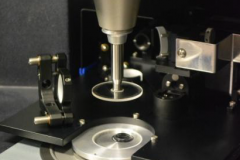Our mission, research focus and main scientific directions
We aim to understand the underlying mechanisms underpinning the behavior of soft materials by linking fundamentals (molecular interactions and conformations) to microscopic structure and dynamics (in two and three dimensions) and final material properties (mechanical, optical, interfacial). Our long-term goal is the molecular design of soft materials with tailored performance.
The rigorous study of the properties of soft materials involves devising protocols, using state-of-the art experimentation and developing specialized setups, as well as synergy of synthesis, specialized characterization, theory, simulations, and physical experiment (including access to specialized infrastructure). Examples of in-house instrumentation include evanescent wave dynamic light scattering, in-situ combination of rheometry with light scattering or microscopy, high-frequency rheometry and nonlinear rheometric tools.
The group’s strength lies on the experimental study of dynamics and rheology of well-characterized materials and determination of the physical origin of their response. Our ambition is to maintain and further enhance the Institute’s position as international pillar in soft matter research.
In this direction, we address outstanding problems in polymer and colloid physics, challenge theories, and open new directions. Current thematic directions (with main goals in parenthesis) are listed below:
- Associating polymers and networks (tailor mechanical reinforcement toward strong and deformable networks)
- Repulsive and attractive colloids (role of attractions in the flow of colloidal glasses)
- Colloidal gels (new routes to novel states, optimize processing conditions to tune properties)
- Anisotropic colloidal particles (rich state behavior and flow phenomena)
- Polymer topology (viscoelasticity, resistance to stretching due to interlocking, supersoft elastomers)
- Biomacromolecules and hydrogels (biological problems, protein solutions, mixed hydrogels)
- High pressure effects (phase behavior, dynamics, supramolecular polymers, industrial applications)
- Soft composites (tailor rheology and mechanics, bridge polymeric and colloidal behavior)





































